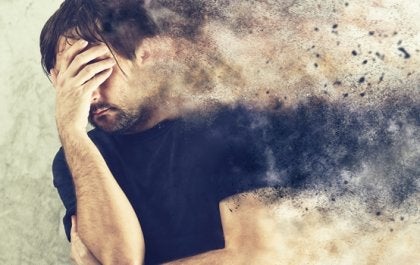If you’ve ever felt like you’re going crazy, whether you’re living in a dream or a bubble, you may have experienced an episode of irrelyalization. The essential characteristics of dererialization disorder are persistent or recurrent episodes of depersonalization. let’s see what these episodes are.
In episodes of depersonalization a sense of lack of reality or strangeness arises, as well as a detachment from oneself, in general, or from certain aspects of oneself, the feeling is to be outside oneself, as if we were an external observer. .
- Episodes of irrelyalization are characterized by a sense of lack of reality or detachment.
- There may also be a sense that we are not familiar with the world.
- Whether it’s people.
- Inanimate objects.
- Or everything around us.
The person may feel that he is in a fog, a dream or a bubble, or as if there is a veil or a glass wall between the individual and the world around him, the world around him is perceived as artificial, colorless or lifeless.
Loss of achievement is often accompanied by subjective visual distortions, which can be: blurred vision, increased visual acuity, enlarged or reduced field of view, two-dimensional or flattened vision, exaggerated three-dimensionality, changes in the distance or size of objects (e. g. macropsy or micropsy).
Hearing distortions can also occur, muting or increasing voices or sounds. It should not be forgotten that, in order to diagnose a dererialization disorder, the presence of clinically significant discomfort is necessary.
There may also be a deterioration in social, professional or other functioning.
Can people with deseralization disorder have trouble describing their symptoms can even think they’re crazy?or ‘go crazy’. Another common experience is the fear of irreversible brain damage.
A common symptom associated with this is a subjective change in the direction of time (for example, things happen too slowly or too fast). Another common symptom is the subjective difficulty of vividly remembering and possessing memories of the past, both personally and emotionally.
Weak bodily symptoms, such as head pressure, tingling, or weakness, are also common. People may experience obsessive anxiety and recurrent mental rumia.
This rumia refers to people obsessing with real existence and control of their perceptions, to determine if they are real, characteristics that are often associated with different degrees of anxiety and depression.
It has been observed that people with this disorder tend to have physiological hyporeactivity to emotional stimuli.
Symptoms occur on average around age 16; however, the disorder can occur in the small to middle childhood environment and only a minority do not remember having symptoms.
Less than 20% of cases occur after age 20 and only 5% appear after age 25. The onset of this disorder during the fourth decade of life, or later, is not common.
On the other hand, the onset of the disorder can be extremely sudden or progressive, the duration of episodes can vary greatly, they can be short (hours or days) or prolonged (weeks, months or years).
While for some people, the intensity of symptoms can increase and decrease significantly, others speak of a constant level of intensity; in extreme cases, symptoms can last for years or decades.
Internal and external factors that affect the intensity of symptoms vary from person to person, although some typical patterns are documented.
Increased symptoms can be caused by stress, worsening mood and anxiety symptoms, new stimulating or overstimulating circumstances, and physical factors, such as lack of sleep.
As we’ve seen, dererialization disorder can be incredibly unpleasant for sufferers, the main feeling is that you’re going crazy or living in a dream, away from reality, which can cause these people to seek medical help. very unpleasant, this disorder is not dangerous.

